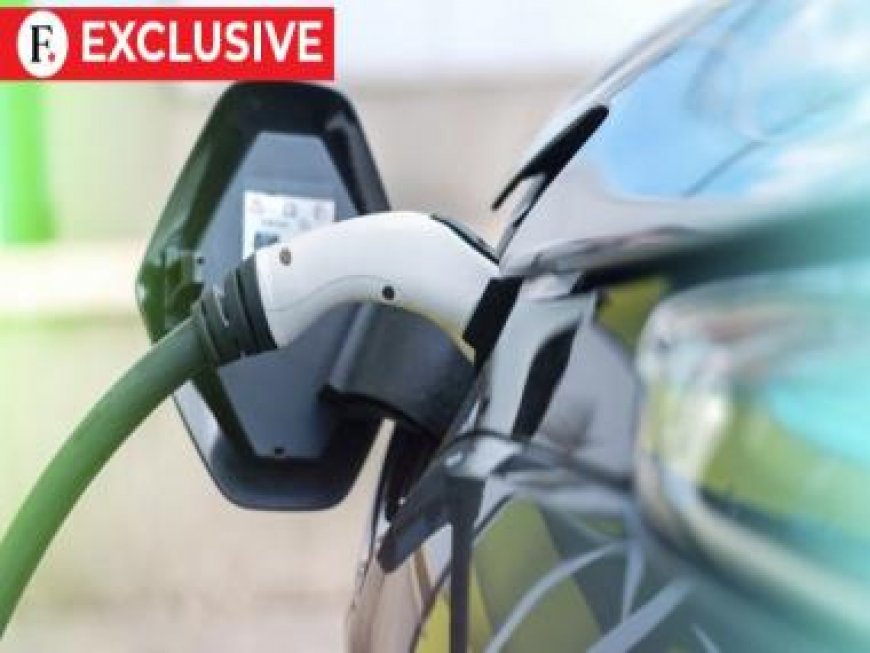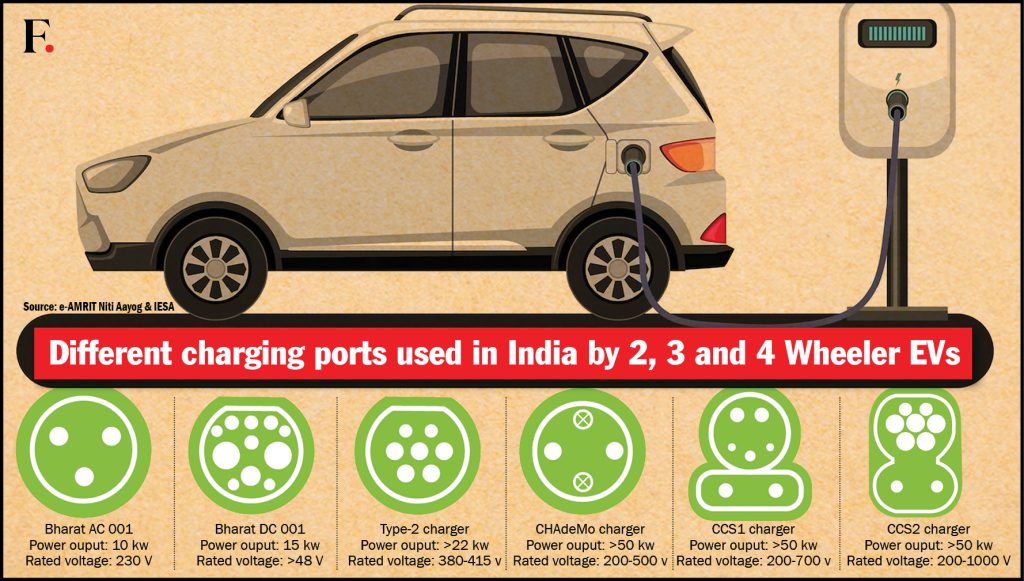India’s EVs running out of power, literally
India’s EVs running out of power, literally

Indians are turning to EVs much faster than the EV industry can provide public charging stations. For most new EV buyers, the attraction of a running cost of just Rs 2 per kilometre or less, is rather offset by the near absence of charging infrastructure.
In such a scenario it is quite wishful to expect a mass shift from ICE to EVs.
Not enough EV charging stations
As of February 2023, India had about 20.65 lakh registered EVs, most of these two and three-wheelers, followed by four-wheelers, and then commercial and government vehicles.
For all of that, we had about 5,250 public charging stations in India, as per data from the Vahan Dashboard of the Ministry of Road Transport & Highways and the Ministry of Power.
Cut to March of 2023 the number of registered EVs rose to 21.7 lakh, as per Minister of State (MoS) for Heavy Industries Krishan Pal Gurjar. The Vahan portal, however, showed that India has 6,586 public charging stations in March.

Effectively, one charging station is available for almost 350 EVs.
As of March, Uttar Pradesh had the highest number of registered EVs at 4.65 lakh, followed by Maharashtra at 2.26 Lakh, Delhi at 2.03 lakh, and Karnataka at 1.83 lakh. Vahan also shows that Delhi had the most number of PCS or Public Charging Stations at 1,845.
If we take a look at the ratios of EVs to PCS, we will see that India is woefully ill-equipped when it comes to charging stations. A white paper published in July 2022 by Alvarez and Marsal, a renowned global professional services firm, states that the optimal ratio of electric vehicles (EVs) to public chargers worldwide ranges from 6 to 20 EVs per charger.
In Uttar Pradesh, the state with the most number of registered EVs, the situation is much worse. Uttar Pradesh only had 406 public charging Stations as of January 2023. In the same month, it had 4.5 lakh EVs. That’s about 1,103 EVs per charging station.
All of this is assuming that the chargers themselves are in working conditions. Firstpost conducted a survey of 50 charging stations picked randomly across Delhi-NCR that had at least 4 charging bays, we found that in 24 of them, at least one of the charging bays was not usable.
More important is whether a user’s EV is compatible with the charging bay.
Absence of standard ports
While most modern EV four-wheelers being sold in India are using the CCS-2 charging port, there are a few older (and by older, we mean 4-5 years old) EVs that use the CCS-1 port. Then there are a few others that use CHAdeMO port, which is most commonly used in Japan, and also a few other Asian countries.
Tesla has always enjoyed the first mover’s advantage when it comes to most technologies related to EVs. It is because of their wide network of Tesla Superchargers that they developed and deployed on their own. Ford, GM and others have adopted Tesla’s charging standard.

“Every major player all over the world is thinking about developing their own charging port,” a source working with a major South Korean car manufacturer operating in India told Firstpost.
“The companies who have decided to adopt Tesla’s charging port are making a mistake. While it may be cost-effective for them to adopt Tesla’s port in the short term, in the long run, they will be paying through their nose for the license to use the port,” the source added.
“Moreover, Tesla doesn’t have superchargers all over the world. What are they planning to do in Asian and European markets? The cost of homologation will again be high,” he added.
The director of Integrated Transport, Electric Mobility & Hydrogen at World Resources Institute (WRI) India, Pawan Mulukutla, believes otherwise.
“We don’t need one OEM to take charge of public charging systems, what we need is standardisation, we need uniformity and interoperability. That will come only when we standardise.”
Standardisation is needed not only for the port but also for other aspects of EV infrastructure if we want to ensure a more rapid adoption on EVs.
“We will need BIS standards and specifications at some point. As much as manufacturers want to develop their own standards and ports, that’s not happening. Standardisation is required because manufacturers cannot trust each other’s charging tech and the kind of batteries and the quality of cells their competitors use,” said Mulukutla.
Moreover, it will be extremely difficult for a manufacturer to develop and deploy their own charging standard and port, no matter how lucrative it may seem in theory.
“In India, four-wheeler EV makers automatically moved to the CCS-2 port. Coming up with a new charging protocol and setting up the infrastructure to deploy it, will be very difficult and capital intensive,” Amit Bhatt, Managing Director of International Council on Clean Transportation, told Firstpost. “We either need to standardise the port or the socket on the car, or the plug that goes into the car.”
“Plus, while some may argue that standardisation may kill innovation, it will be beneficial for manufacturers as well. If BIS comes up with a standard, it will make scaling up much easier and quicker for manufacturers,” Bhatt added.
India needs destination charging, not fast charging
Tesla’s Supercharger network, although a perfect fit for the US, may not be that good a fit for India. “The traffic and mobility profiles in India and the US are completely different,” says Bhatt. “Here, we travel much shorter distances and have different fleet utilisation. In the US, you’re travelling longer distances, and therefore need fast chargers,” he adds.
Moreover, the existing ‘fast chargers’ that we have in India are not actually fast. “In India, 25kW DC is fast for us, and so is 50kW DC. In Europe and the US, these are relatively slow,” he adds.
And yet, our standard of “fast charging” seems to working just fine for us. Most EVs that are operational in India, can be charged to up to 80 per cent or a range of about 250 kilometres in 30-45 minutes.
“Destination charging is when a user charges his or her EV at set destinations, like their homes or offices. And usually, it has been observed that this is how most EV users are going about things. A report by Tata found that 95 per cent of their EV owners charged their EVs at home and would top it up at their offices,” says Bhatt.
“What we need is destination charging or charging our EVs at set destinations, such as homes and workplaces. Most EV buyers, especially 4-wheeler EV buyers, live in high-rise apartments. Although some RWAs are enthusiastic about having a charging station, most RWAs are averse to it,” he added. Some RWAs have even sent notices to residents for getting a small, home-based charging station in their parking for their EVs.
This seems to be a conundrum that will continue until EVs become more prevalent. Up until then, EV makers will have to rely on PCS or Public Charging Stations. However, they have their own issues. And what’s to stop them from charging a premium or a substantial markup over the prevalent rate of electricity per unit, especially in areas where EV stations are few, but where people have a lot of EVs?
“Basic demand and supply,” says Mulukutla. “As more and more people adopt EVs, the density and distribution of EV charging stations will also increase. Yes, in the short run, charging solution providers may charge a premium or may increase their markups. In the long run, however, prices will come down. It will eventually become a matter of who can accommodate more EVs in their stations,” he says.
Read all the Latest News, Trending News, Cricket News, Bollywood News,
India News and Entertainment News here. Follow us on Facebook, Twitter and Instagram.
What's Your Reaction?

























































